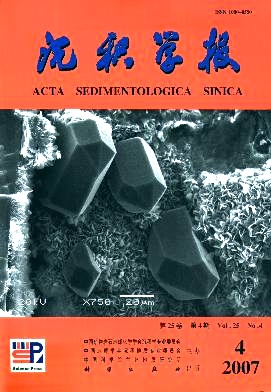The Late Triassic Paleo\|weathering Crust in the Qiangtang Basin, Northern Tibet: geology, geochemistry and significance
- Received Date: 1900-01-01
- Rev Recd Date: 1900-01-01
- Publish Date: 2007-08-10
-
Key words:
- paleo\ /
- weathering crust /
- depositional hiatus /
- geochemistry
Abstract: Recent developments in the research on the geology and geochemistry of the newly\|discovered clayey breccias at the top of the Xiaochaka Formation in the Juhuashan, Xiaochaka and Shishuihe areas, Qiangtang Basin, northern Tibet have disclosed that mineral compositions, textures and structures, occurrences and sectional architectures of the clayey breccias agree well with those of the paleo\|weathering crust in these areas. Compared with the bedrocks, the paleo\|weathering crust is characterized by the leaching out of CaO and CO2, and relative enrichment of SiO2, Al2O3, Fe2O3, K2O, Na2O, MnO and P2O5. The clayey weathered residues in the paleo\|weathering crust are characterized by marked enrichment of REEs, much higher contents of LREEs than those of HREEs, markedly positive Ce anomalies and negative Eu anomalies, and a noticeable increase in other element contents besides Mo, Sn and U from the clayey weathered residues. The characteristics cited above have documented that there was a sharp depositional hiatus in the Qiangtang Basin during the Late Triassic.
The discovery of the paleo\|weathering crust at the top of the Upper Triassic Xiaochaka Formation has provided important evidence for the understanding of regional history of crustal, paleoclimatic and paleogeographic evolution, sequence stratigraphic division and correlation and Qiantang petroliferous basin analysis.
| Citation: | WANG Jian. The Late Triassic Paleo\|weathering Crust in the Qiangtang Basin, Northern Tibet: geology, geochemistry and significance[J]. Acta Sedimentologica Sinica, 2007, 25(4): 487-494. |






 DownLoad:
DownLoad: